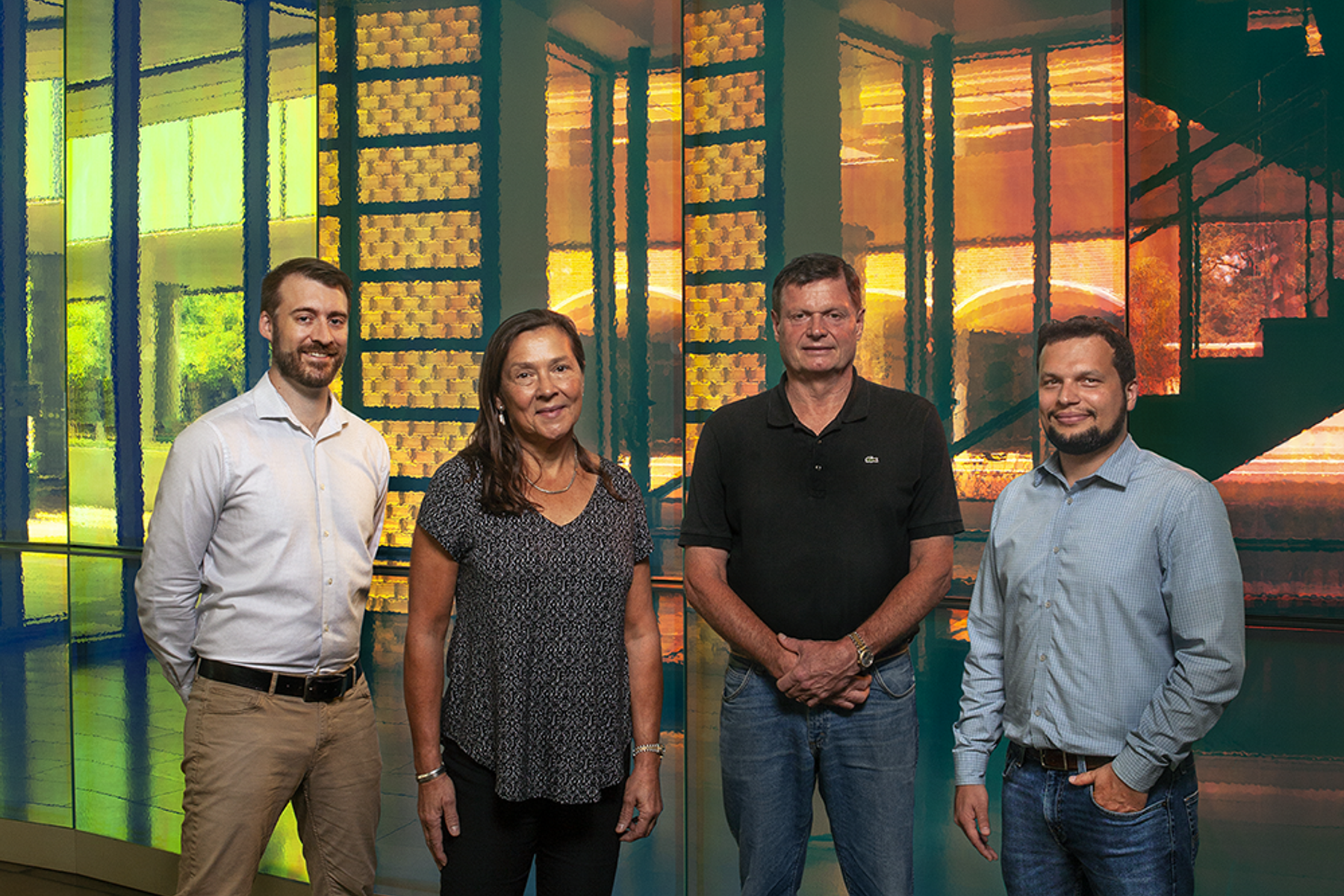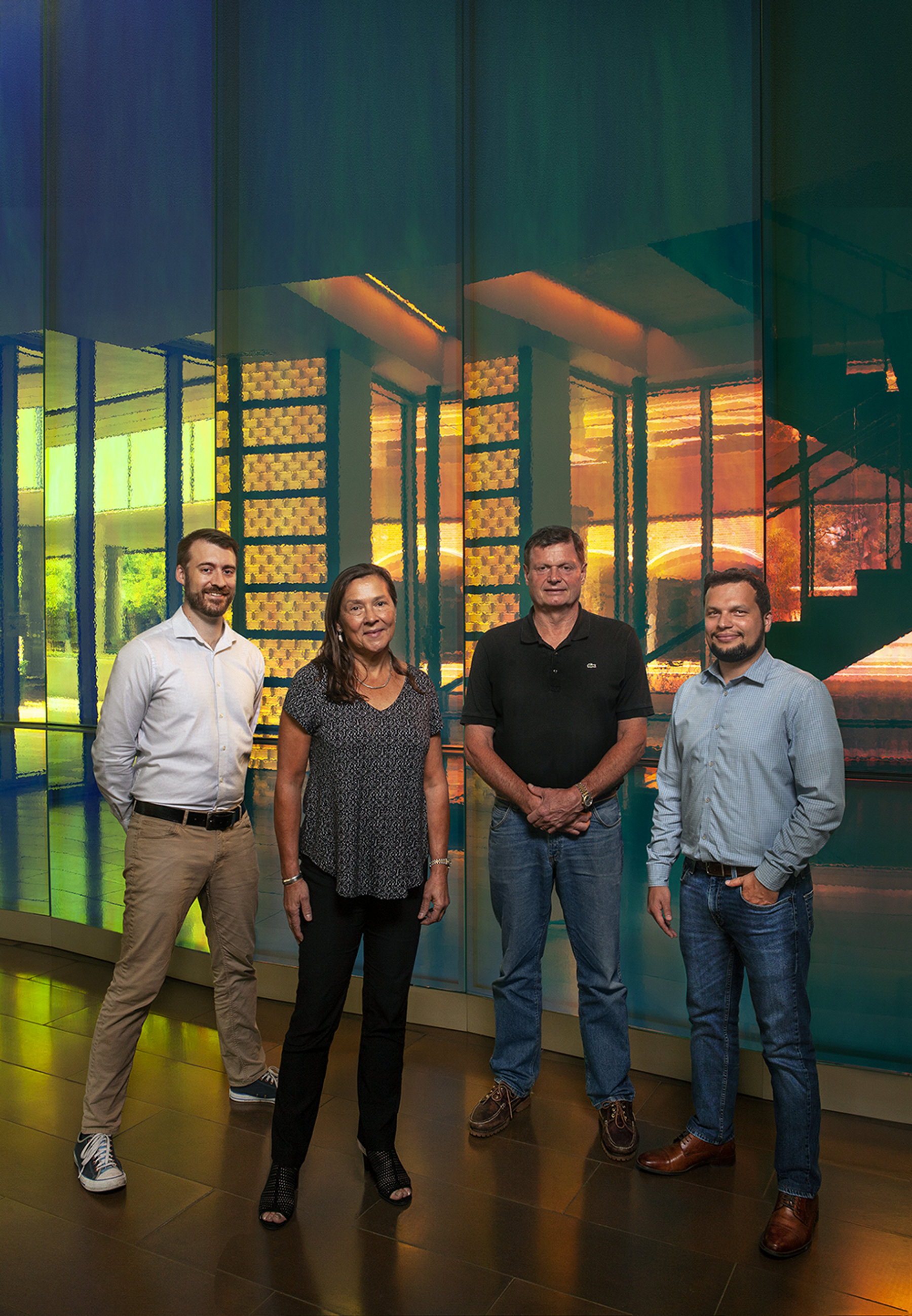Chemical manufacturing driven by light, enabling cheaper scalable on-site production.
Syzygy Plasmonics is pioneering a new type of chemical reactor driven by light rather than heat, enabling the potential for dramatically more efficient chemical manufacturing. At the heart of the reactor is a photocatalyst built with nanotechnology invented at Rice University. The company has focused its first efforts on hydrogen production, but its reactor platform has shown the ability to produce other industrial gases and chemicals without the high carbon emissions and costs associated with typical production processes.
Hydrogen may be the lightest element in the universe, but isolating and transporting it exacts a massive environmental toll. Syzygy’s reactor is simple, small, and efficient enough to reduce net global carbon production emissions of the gas at scale. It also has the potential to eliminate hydrogen’s cumbersome transportation chain. Instead of producing the gas at a central location, liquifying it, trucking the liquid, and re-gasifying the liquid, a Syzygy reactor the size of an outbuilding could be installed on site to produce only the amount of gas that is required, exactly when it is needed.
This decentralization will drive down hydrogen costs to levels competitive with gasoline and diesel, accelerating the adoption of hydrogen fuel cells in industrial and heavy-duty vehicle applications like forklifts, buses, and trucks. It will also help decrease the costs and emissions associated with producing the 61 million metric tons of hydrogen consumed by chemical production and refining. If Syzygy’s reactor were solely designed to produce hydrogen, it would fundamentally redefine an industry. But the plasmonic nanoparticle platform at the heart of the reactor is capable of much more.
Syzygy’s core photocatalysis technology represents the culmination of over two decades of research by professors and scientific co-founders Dr. Naomi Halas and Dr. Peter Nordlander at Rice University. The professors, working out of the University’s Laboratory for Nanophotonics, invented the technology while investigating the interactions of light and matter at the nanoscale.
Trevor Best and Dr. Suman Khatiwada, Syzygy’s co-founders, saw the business potential for the professors’ laboratory breakthrough and set it on a path to commercialization. Best and Khatiwada met in the Houston-based research laboratories of the industrial oil field services company Baker Hughes, Best as a manager in process improvement and Khatiwada as a research scientist. The two shared an entrepreneurial spirit and connected over their drive to create positive impact.
For over a year, Best and Khatiwada ate their weekend breakfast together while poring over academic journals hunting for transformative technologies. When the pair discovered the plasmonics work of Halas and Nordlander, they immediately saw the potential of such technology and set out to engage the professors. Syzygy Plasmonics was founded soon after those first discussions.
The company, whose name refers to the alignment of three planetary bodies, was launched in 2018 with the intention of aligning energy, technology, and sustainability in a single world-changing business. The team has since scaled the productivity of its reactor technology more than 10,000X and improved energy efficiency more than 100X. The company is also the recipient of a 2019 US Department of Energy ARPA-E award for the development of a reactor that creates hydrogen from ammonia, and an NSF SBIR Phase I project for the development of a reactor that processes carbon dioxide back into syngas, a crucial raw material for the production of many other chemicals.
Best is quick to note that the early success of Syzygy is anything but fortuitous. He attributes such rapid improvements in its core reactor technology to a team that is simultaneously the most qualified in the world at what they do and committed to a future in which chemicals are created, and pollutants remediated, with a technology powered by light.

